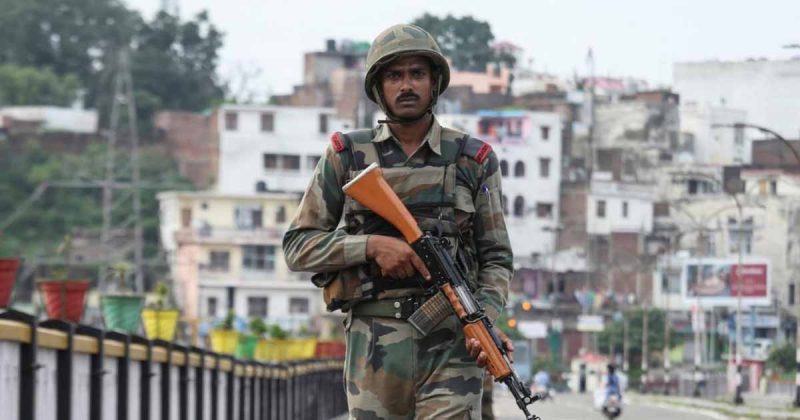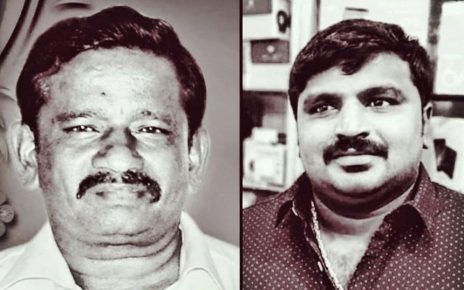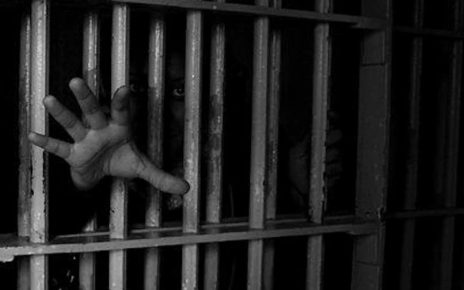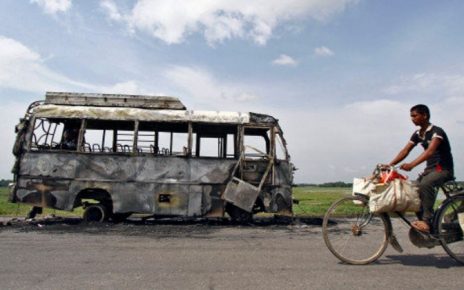Aljazeera
05 July 2020
By Amjed Jaaved
Women continued to be tortured or targeted for sexual violence in custody and the victims often belonged to the weaker sections. During 2019, the death of at least four women in police custody was reported.
India, a non-permanent member of the United Nations’ Security Council, is the world’s largest secular democracy. It abstained from voting in favour of `UN resolution over materials used for torture, execution’. Since 14 October 1997, India has been a signatory to the UN Convention against Torture and other Cruel, Inhuman and Degrading Treatment or Punishment. Yet it has not ratified the convention even after 23 years of membership. Renowned journalist Karan Thapar called this “laxity” “shameful”.
India’s Law Commission has observed that India faced problems extraditing criminals from foreign countries because the Convention prevents extradition to a country where there is danger of torture. Many financial absconders (Mahul Choksy, Vijay Modi, Nirav Mallya and 36 other absconding businessmen) pleaded in foreign courts that they should be tried abroad for fear of torture in India.
India’s Law Commission had recommended stringent punishment for individuals committing torture. The draft Prevention of Torture Bill, 2017, was never enacted. It provides for up to 10 years imprisonment and fine for torture. If torture results in death, the punishment includes death or life imprisonment in addition to the fine.
India’s failure to comply with international conventions
At international forums India has consistently and unequivocally condemned and deprecated custodial torture and has signed the UN Convention. But the Centre’s reluctance to ratify the Convention stems from the fact that it envisages comprehensive and standalone legislation, which India presently lacks.
The existing law against torture falls short on several accounts, both procedurally and substantively, from the Convention and thus there is an urgent need for an all-embracing, standalone enactment based on it. Articles 51(c) and 253 of the Indian Constitution underscore the “constitutional imperative” of aligning domestic laws with international law and obligations.
India’s draconian laws, including Section 4 of the Armed Forces Special Powers Act, 1990, as pointed out in international reports, allows any personnel operating under the law to use lethal force not only in cases of self-defence but also against any person contravening laws or orders “prohibiting the assembly of five or more persons”.
In India, torture is legal.
Victoria Shofield graphically depicts the behaviour of Indian forces in her 1996 book, Kashmir in the Crossfire (Chapter 15: Hearts and minds). Her observations are still relevant today. A few extracts are in order.
“…Initially there was tremendous reluctance to acknowledge or publicise any of the alleged excesses, indiscriminate killing or arbitrary disappearances noted by the human rights groups for fear of humiliating and hence possibly demoralising the soldiers. …As noted by the Report of the International Commission of Jurists after their visit in August1993…`The jurists, however, also noted that the authorities had been ‘tardy in instituting proceedings against governmental personnel who commit abuses against the people and have created an aura of impunity surrounding officials who violate human rights.’ In conclusion, they stated: ‘…There is however a long way to go, to overcome indiscipline and misconduct of the security forces, particularly the BSF, the persistent and regular use of torture in interrogation and the practice of extra–judicial execution’. (Human Rights in Kashmir, Report of a Mission, International Commission of Jurists, 1994).
Since the insurgency began, torture of the militants and suspected militants had been a feature of Indian counter-insurgency tactics as a means of extracting information, coercing confessions and punishment.
Custodial torture in Tamil Nadu: Youth dies after being kicked on private parts, punched on back by Tenkasi police https://t.co/zR5rEMTitQ via @TOIChennai pic.twitter.com/BuRdPJIHNS
— The Times Of India (@timesofindia) June 28, 2020
According to Amnesty International, ‘the brutality of torture in Jammu and Kashmir defies belief. It has left people mutilated and disabled for life. The severity of torture meted out by the Indian security forces in Jammu and Kashmir is the main reason for the appalling number of deaths in custody.
The torture generally includes electric shocks, beatings, and the use of a heavy roller on leg muscles, which can result in extensive muscle damage, leading to acute renal failure. Other forms of inhuman treatment on various parts of the body, including sexual molestation, also have been reported.
According to one victim, quoted by Amnesty,” You always know in advance about the “current” because they send in the barber to shave you from head to foot.
This is supposed to facilitate the flow of electricity. After he finishes shaving you, he hands you a cup of water to drink and then they attach the electrodes. Other common methods described by the U.S. Human Rights Agency, Asia Watch, include suspension by the hands or feet, stretching the legs apart and burning the skin with a clothes iron or other heated object. Victims have also been kicked and stamped on security forces wearing spiked boots.’
“Sixty-three interrogation centres where torture is routinely carried out are believed to exist in Jammu and Kashmir, mostly run by the BSF and the CRPF. …In its December 1993 report Amnesty produced information about the appearance in Kashmir. In its response, the Indian government answered many of the allegations contained in Amnesty’s report and supplied details on some of those listed as missing… Another report by Amnesty in January 1995 regarding 705 people who, since 1990, had died in custody as a result of torture, shooting, or medical neglect, produced yet another rebuttal from the Indian government. Amnesty however, described their response as `evasive and misleading’. (Analysis of the Government of India’s Response to Amnesty International’s Report on Torture and Deaths in Custody in Jammu and Kashmir, March 1995).
Several subsequent reports document torture, custodial killings, and molestation in India. One such report is the United Nations High Commissioner for Human Rights, June 14 “Report on the Situation of Human Rights in Kashmir: Developments in the Indian State of Jammu and Kashmir from June 2016 to April 2018, and General Human Rights Concerns in Azad Jammu and Kashmir and Gilgit–Baltistan” by the Office of the United Nations High Commissioner for Human Rights (OHCHR). Its 49 pages have 388 footnotes, citing, mostly, Indian records such as official statements in Parliament, while refusing the U.N’s repeated requests for on-site inspection.
India’s draconian laws, including Section 4 of the Armed Forces Special Powers Act, 1990, as pointed out in international reports, allows any personnel operating under the law to use lethal force not only in cases of self-defence but also against any person contravening laws or orders “prohibiting the assembly of five or more persons”.
Custodial torture is legal in India
A Kashmiri was dragged out of his car and riddled with bullets (see photo). In the annual report on Children and Armed Conflict, United Nations secretary-general Guterres, ` urged India to stop torture and illegal detention of minors in the occupied valley’ without charge or due process. The report said that “the United Nations verified the killing (8) and maiming (7) of 15 children (13 boys, 2 girls), between the ages of 1 and 17, by or during joint operations of the Central Reserve Police Force, the Indian Army (Rashtriya Rifles) and the Special Operations Group of the Jammu and Kashmir Police”.
Even poor Hindus are not spared. A father and son were tortured to death for keeping their timber shop open for fifteen minutes after closing time. Five custodial deaths occur in India daily.
Synchronized with the International Day in Support of Victims of Torture, ‘India: Annual Report on Torture 2019’ said 1,606 of the deaths happened in judicial custody and 125 in police custody.
“Out of the 125 deaths in police custody, Uttar Pradesh topped with 14 deaths, followed by Tamil Nadu and Punjab with 11 deaths each and Bihar with 10 deaths,” said the report published by the National Campaign Against Torture.
It is eerie to note that torture methods mentioned by Victoria Shoefield (1995 /96) are still being used. The UN report mentions “Torture methods used in 2019 included hammering iron nails in the body (Gufran Alam and Taslim Ansari of Bihar), applying roller on legs and burning (Rizwan Asad Pandit of Jammu and Kashmir), ‘falanga’ wherein the soles of the feet are beaten (Rajkumar of Kerala), stretching legs apart in opposite side (Rajkumar of Kerala), and hitting in private parts (Brijpal Maurya and Lina Narjinari of Haryana),” said NCAT director Paritosh Chakma.
The other methods of torture included electric shock, pouring petrol or applying chilli powder on private parts, beating while handcuffed, pricking body with needles, branding with a hot iron rod, beating after stripping, urinating in mouth, inserting a hard blunt object into anus, beating after hanging upside down with hands and legs tied, forcing to perform oral sex, pressing fingernails with pliers, beating with iron rods after victim is suspended between two tables with hands and legs tied, and kicking the abdomen of a pregnant woman.
Woman are prime targets of torture
Women continued to be tortured or targeted for sexual violence in custody and the victims often belonged to the weaker sections. During 2019, the death of at least four women in police custody was reported, the NCAT said.
UN Secretary-General Antonio Guterres has voiced deep concern over the continued use of pellet guns against children by the Indian security forces in occupied Kashmir, and called on New Delhi to “immediately end” such practices.
The call was made by Guterres in the annual report on Children and Armed Conflict, which was launched on Monday by his Special Representative on the subject, Virginia Gamba.
The UN chief also urged India to stop torture and illegal detention of minors in the occupied valley. The secretary-general said, “I am concerned by the detention of children, including their arrest during night raids, internment at army camps, torture in detention and detention without charge or due process, and urge the (Indian) Government to immediately end this practice,”.
With respect to atrocities committed against children in Kashmir, the report said that “the United Nations verified the killing (8) and maiming (7) of 15 children (13 boys, 2 girls), between the ages of 1 and 17, by or during joint operations of the Central Reserve Police Force, the Indian Army (Rashtriya Rifles) and the Special Operations Group of the Jammu and Kashmir Police”.
“Most of the casualties that occurred in Jammu and Kashmir were mainly caused by torture in detention, shootings, including from pellet guns.”
The report particularly cites 68 instances where children between the ages of 9 and 17 have been detained by Indian security services in Jammu and Kashmir on national security-related charges, for alleged association with armed groups.
Does India deserve to be a member of or, God forbid, Security Council president in August? Why it should not be outlawed as a pariah state or a rogue state for flouting international treaties and conventions?
The author is the editor of the monthly magazine, The Consul. He has been contributing free-lance for over five decades. His contributions stand published in the leading dailies and magazines. The views expressed in this article are the author’s own and do not necessarily reflect the editorial policy of Global Village Space.




